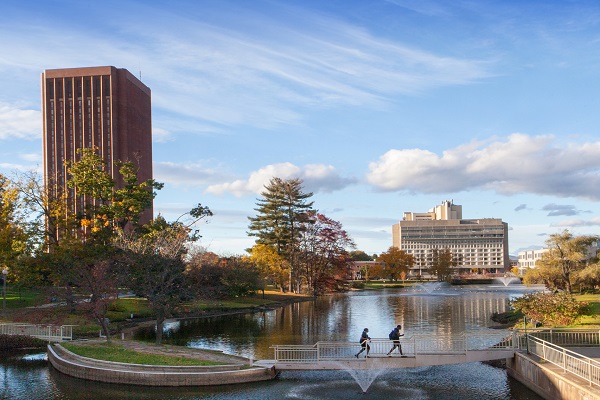Sustainable Engineering Laboratories To Come Up At University Of Massachusetts Amherst
The University of Massachusetts Amherst broke ground today for its new state-of-the-art Sustainable Engineering Laboratories (SEL). The 78,000-square-foot facility is designed to inspire interdisciplinary innovation and unite the research of a number of UMass Amherst centers and laboratories under one roof.
Anchoring the new $125 million facility will be university research institutions in sustainable, equitable technology and transportation: the Energy Transition Institute, the Wind Energy Center and the UMass Transportation Center. Also envisioned to be housed there are new state-of-the-art hubs for collaboration and innovation, such as an energy data and operations center, ocean energy and energy storage laboratories and an autonomous vehicle technology laboratory.
SEL
UMass Amherst Chancellor Kumble Subbaswamy said, “Today, in breaking ground for the SEL, we are reaffirming and expanding the university’s leadership role in addressing the global climate crisis. When its doors open, this state-of-the-art facility will be one of the first carbon neutral, geothermal buildings on campus, thereby advancing our UMass Carbon Zero goals and serving as a model for sustainable design and construction. It will be a living laboratory and campus hub for pioneering research and education in clean energy and sustainable engineering.”
Raman said the immersive teaching and learning facility is designed to leverage and attract public and private sector investment. It will be an exemplar of solutions prioritized by the federal Infrastructure Investment and Jobs Act and the commonwealth’s Clean Energy and Climate Plan for 2030. He also noted, “The SEL will also build our capacity to serve as a valuable pipeline of top talent to industry, which has a critical need for engineers, particularly those trained and focused on green technology solutions.”
The SEL is envisioned to feature:
Sustainable construction (LEED-certified), achieving net-zero carbon emissions
Test beds for efficient and equitable methodologies to generate, distribute, use and store energy
A smart microgrid to couple new renewable energy generation and storage technologies to real-life use
An energy operations center that integrates data from campus and the surrounding region — a living lab to study and implement sustainable solutions
State-of-the-art flex learning classrooms and collaboration/demonstration spaces
The SEL is also intended to be a campus hub for sustainability efforts.

